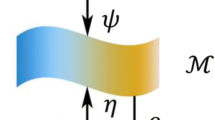Abstract
A common difficulty of intelligent medical diagnosis is the high dimensionality of medical data. Manifold learning provides an elegant way to solve this problem by mapping the high-dimensional data into the low-dimensional embedding. However, traditional manifold learning algorithms fail to fully utilize the supervised information in medical diagnosis. To overcome this problem, in this paper we propose a novel Supervised Local Spline Embedding (SLSE) algorithm, which incorporates the supervised information into the local spline manifold embedding. SLSE not only preserves the local neighborhood structure, but also utilizes the global manifold shape through spline interpolation. Moreover, SLSE leverages the supervised information by maximizing the inter-class scatterness and minimizing the intra-class scatterness in the low-dimensional embedding. The promising experimental results on real-world medical datasets illustrate the superiority of our proposed approach in comparison with the existing popular manifold learning algorithms.




Similar content being viewed by others
References
Abualigah LMQ (2019) Feature selection and enhanced krill herd algorithm for text document clustering. Springer
Abuhasel KA, Iliyasu AM, Fatichah C (2015) A combined adaboost and newfm technique for medical data classification. In: Information science and applications. Springer, pp 801–809
Azar AT, El-Metwally SM (2013) Decision tree classifiers for automated medical diagnosis. Neural Comput Appl 23(7–8):2387–2403
Balasubramanian M, Schwartz EL (2002) The isomap algorithm and topological stability. Science 295(5552):7–7
Bruijne MD (2016) Machine learning approaches in medical image analysis: from detection to diagnosis. Med Image Anal 33:94–97
Cai D, He X, Zhou K, Han J, Bao H (2007) Locality sensitive discriminant analysis.. In: IJCAI, vol 2007, pp 1713–1726
Chang RF, Wu WJ, Moon WK, Chou YH, Chen DR (2003) Support vector machines for diagnosis of breast tumors on us images. Acad Radiol 10(2):189–197
Duchon J (1977) Splines minimizing rotation-invariant semi-norms in Sobolev spaces. Construct Theory Funct Several Variab 571:85–100
Foster KR, Koprowski R, Skufca JD (2014) Machine learning, medical diagnosis, and biomedical engineering research - commentary. Biomed Eng Online 13 (1):94
Gui J, Jia W, Zhu L, Wang S-L, Huang D-S (2010) Locality preserving discriminant projections for face and palmprint recognition. Neurocomputing 73(13–15):2696–2707
He X, Niyogi P (2004) Locality preserving projections. In: Advances in neural information processing systems, pp 153–160
Kononenko I (2001) Machine learning for medical diagnosis: history, state of the art and perspective. Artif Intell Med 23(1):89–109
Lan R, Zhou Y, Liu Z, Luo X (2019) Prior knowledge-based probabilistic collaborative representation for visual recognition. IEEE Trans Cybern PP(99):1–11
Li H, Jiang T, Zhang K (2004) Efficient and robust feature extraction by maximum margin criterion. In: Advances in neural information processing systems, pp 97–104
Liu X, Tosun D, Weiner MW, Schuff N (2013) Locally linear embedding (lle) for mri based alzheimer’s disease classification. Neuroimage 83:148–157
Lou S, Zhao X, Chuang Y, Yu H, Zhang S (2016) Graph regularized sparsity discriminant analysis for face recognition. Neurocomputing 173:290–297
Lu H, Li Y, Chen M, Kim H, Serikawa S (2018) Brain intelligence: go beyond artificial intelligence. Mob Netw Appl 23(2):368–375
Mayoraz E, Alpaydin E (2004) Support vector machines for multi-class classification. Microelectron Comput 1607(10):833–842
Ridder DD, Kouropteva O, Okun O, Pietikäinen M, Duin RPW (2003) Supervised locally linear embedding. In: Joint international conference on artificial neural networks & neural information processing. Springer, pp 333–341
Roweis ST, Saul LK (2000) Nonlinear dimensionality reduction by locally linear embedding. Science 290(5500):2323–2326
Vijayan VV, Anjali C (2015) Prediction and diagnosis of diabetes mellitus—a machine learning approach. In: 2015 IEEE recent advances in intelligent computational systems (RAICS). IEEE, pp 122–127
Wang G, Shi N, Shu Y, Liu D (2016) Embedded manifold-based kernel fisher discriminant analysis for face recognition. Neural Process Lett 43(1):1–16
Wang Y, Tang YY, Li L, Chen H, Pan J (2019) Atomic representation-based classification: theory, algorithm and applications. IEEE Trans Pattern Anal Mach Intell 41(1):6–19
Wang Y, Tang YY, Li L, Chen H (2019) Modal regression-based atomic representation for robust face recognition and reconstruction. IEEE Trans Cybern, 1–13
Wen J, Fang X, Cui J, Fei L, Yan K, Chen Y, Xu Y (2018) Robust sparse linear discriminant analysis. IEEE Trans Circ Syst Video Technol 29(2):390–403
Weng S, Zhang DC, Lin Z, Zhang X (2005) Mining the structural knowledge of high-dimensional medical data using isomap. Med Biol Eng Comput 43(3):410–412
Xiang S, Nie F, Zhang C, Zhang C (2009) Nonlinear dimensionality reduction with local spline embedding. IEEE Trans Knowl Data Eng 21(9):1285–1298
Yang X, Liu C, Wang Z, Yang J, Min HL, Wang L, Cheng KT (2017) Co-trained convolutional neural networks for automated detection of prostate cancer in multi-parametric mri. Med Image Anal 42:212–227
Zhang J, Wang J, Cai X (2017) Sparse locality preserving discriminative projections for face recognition. Neurocomputing 260:321–330
Zhou Y, Sun S (2016) Manifold partition discriminant analysis. IEEE Trans Cybern 47(4):830–840
Acknowledgements
This work was supported in part by the Chinese National Natural Science Foundation under Grant Nos. 61402395, 61802336 and 61906100, Natural Science Foundation of Jiangsu Province under contracts BK20151314, BK20140492 and BK20180822, Jiangsu Overseas Research and Training Program for University Prominent Young and Middle-aged Teachers and Presidents, Jiangsu Government Scholarship for Overseas Studies, Natural Science Foundation of Education Department of Jiangsu Province under contract 18KJB520040.
Author information
Authors and Affiliations
Corresponding author
Additional information
Publisher’s note
Springer Nature remains neutral with regard to jurisdictional claims in published maps and institutional affiliations.
Rights and permissions
About this article
Cite this article
He, P., Chang, X., Xu, X. et al. Supervised local spline embedding for medical diagnosis. Multimed Tools Appl 79, 15025–15042 (2020). https://doi.org/10.1007/s11042-019-08581-2
Received:
Revised:
Accepted:
Published:
Issue Date:
DOI: https://doi.org/10.1007/s11042-019-08581-2




